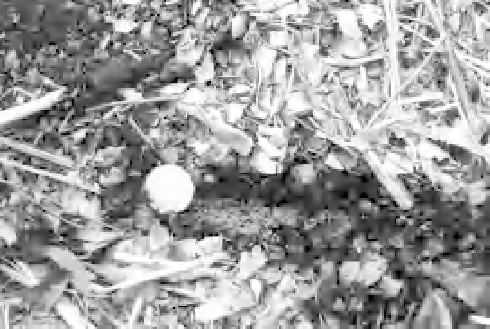Environmental Engineering Reference
In-Depth Information
ity is to plot monitoring data on a line representing a
continuum from a very dysfunctional to a fully func-
tional landscape (Figure 4.7b). In this case, the fully
functional end of the continuum is represented by data
from a reference site, where the nutrient cycling index
value was 85%.
These two graphs, referred to as ' time - traces ' and
' T - mark continuums ' (Bastin
et al
. 2010 ), provide
restorationists with information they need to assess
whether nutrient cycling, an important biological
process, is progressing. The time scale selected should
refl ect the dynamics of the response, and may vary
from months to years to even decades. Such graphs
also provide an answer to the question: 'Trends OK?'
(Figure 4.1), and help restorationists answer the bigger
question: ' Goals achieved? '
In addition to restoration trends expressed by data,
restorationists can also evaluate general types of moni-
toring information to confi rm whether their goals are
being achieved. For example, they can look for critical
milestones such as the time at which vegetation on the
restoration site begins to provide useful
goods and
services
(e.g. clean water from a restored watershed).
Clean water will be produced when soils on the land-
scape become resistant to erosion because organic
matter is effectively bonding soil particles. Organisms
that bind soil particles by processing fi nely divided
organic matter also provide long-lived structures in the
soil which increase its permeability to water and to gas
exchange; these biological processes indicate 'soil
health'. There are no simple and rapid measurements
for such very fi ne-scaled processes, but by simply exam-
ining the nature of litter incorporation into the soil
(physical burial) and its decomposition and humifi ca-
tion (Figure 4.8), restorationists obtain a simple surro-
gate (indicator) for these complex biological processes.
Figure 4.8
Surface litter being decomposed, humifi ed
(dark band) and incorporated into soil on a restored site in a
temperate woodland in south-eastern Australia. The
Australian 50-cent coin is 3.3 cm in diameter. (Photograph
by David Tongway.)
such as building reserves of mineral nutrients and
organic carbon in the topsoil. An initial landscape
analysis, therefore, needs to focus on how effective all
system processes are functioning and how they have
been affected by disturbances.
We often fi nd that restorationists are too ambitious
in setting their initial goals. They enthusiastically
specify outcomes that are not possible given the time-
frame and fi nancial resources available. For example,
returning an open-cut coal mine to be like the pre-
mining landscape and used in the same way as it was
previously, is usually an impossible goal because of the
degree of disturbance and cost of restoration. After a
thorough landscape analysis, the goals should be re-
expressed in terms of where progress towards achiev-
ing them can be monitored and assessed with reliability
(see discussion on sequential references in Chapters 1
and 22 in this regard). At all times we need to recall
that we are dealing with complex and dynamic land-
scape systems, so that it may well be counterproductive
to precisely defi ne long-term goals at the outset; for
example, failing to reach a specifi ed plant density
(stems per hectare) by a small margin should not mean
that the restoration has failed.
The planning and implementation approach we
described in this chapter provide a bridge between the
hard reality of successfully restoring landscapes given
limited fi nancial resources and the critical need for
landscapes to provide
goods and services
such as
4.3
CONCLUDING REMARKS
In this chapter, we emphasized how disturbances
affected landscape and ecosystem processes related to
water (infi ltration, runoff, run-on and erosion). We did
this because of the 'primacy of water' dictum for eco-
systems (Noy-Meir 1973). This dictum implies that if
adequate capture of rainfall is not being achieved,
landscape processes related to water retention
(obstructing runoff, increasing infi ltration) need to be
urgently improved (e.g. a higher cover of vegetation).
But, our approach extends to other limiting resources,





